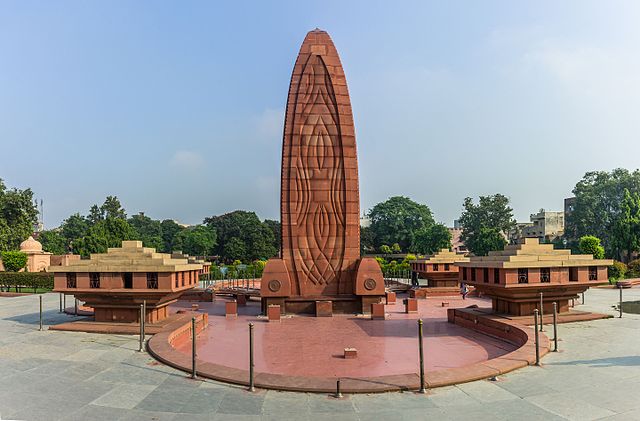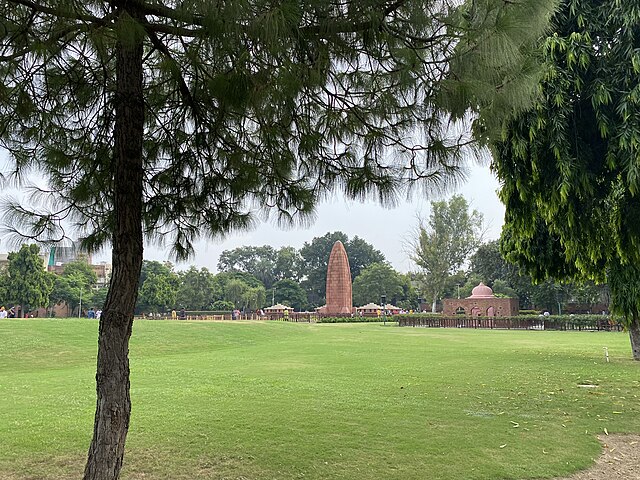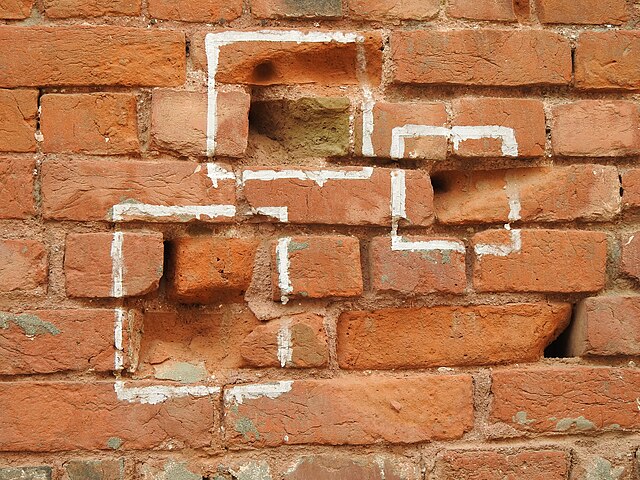Have you ever wondered about a single event that completely transformed an entire nation’s struggle for freedom? The Jallianwala Bagh massacre stands as one of the darkest chapters in British colonial history, yet it became the catalyst that ignited India’s determined march toward independence. This tragic incident didn’t just claim hundreds of innocent lives—it awakened the soul of a nation and turned moderate freedom fighters into fierce revolutionaries.
What is Jallianwala Bagh?
Jallianwala Bagh is a public garden located in Amritsar, Punjab, India. But it’s much more than just a garden—it’s a sacred memorial that bears witness to one of the most brutal acts of colonial oppression in Indian history. On April 13, 1919, this peaceful space became the site of an indiscriminate massacre when British troops, under the command of General Reginald Dyer, opened fire on thousands of unarmed Indian civilians.
The name “Jallianwala Bagh” literally translates to “Jallianwala Garden,” named after the Jallian family who once owned this land. Today, it serves as a national memorial, preserving the memory of those who lost their lives and reminding us of the price of freedom.
The Historical Context: India Under British Rule
To understand the magnitude of the Jallianwala Bagh massacre, we need to step back and examine the political climate of early 20th century India. By 1919, Britain had been ruling India for over 150 years, and the seeds of resistance were already taking root across the subcontinent.
The First World War had just ended, and Indians who had supported Britain during the war expected some form of self-governance as a reward for their loyalty. Instead, they faced increased repression and discriminatory laws. The British government was becoming increasingly paranoid about potential uprisings, especially after the Russian Revolution of 1917 had shown the world that even mighty empires could fall.
The Rowlatt Act: Seeds of Discontent

In March 1919, the British government passed the infamous Rowlatt Act, also known as the “Black Act.” This draconian legislation gave the colonial government sweeping powers to arrest anyone suspected of sedition without trial. Imagine living in a world where you could be imprisoned indefinitely without even knowing what crime you’d supposedly committed—that was the reality for Indians under this act.
The Rowlatt Act was like throwing gasoline on an already smoldering fire. It allowed the government to try political cases without juries and gave provincial governments the power to detain suspects without trial. For Indians who had hoped for greater freedom after the war, this felt like a slap in the face.
Rising Tensions in Punjab
Punjab, in particular, was a hotbed of anti-colonial sentiment in 1919. The region had contributed significantly to the British war effort, sending thousands of soldiers to fight in World War I. When these soldiers returned home, they expected recognition and reform. Instead, they found their homeland under even tighter British control.
The arrest of two popular leaders, Dr. Saifuddin Kitchlew and Dr. Satyapal, on April 10, 1919, had already inflamed tensions in Amritsar. These men were advocates of non-violent resistance and had been organizing peaceful protests against the Rowlatt Act. Their arrest without trial seemed to prove that the British were unwilling to tolerate even peaceful dissent.
The Fateful Day: April 13, 1919
April 13, 1919, dawned like any other day in Amritsar, but it would end as one of the darkest days in Indian history. It was Baisakhi, a harvest festival celebrated with great joy across Punjab. Thousands of people from surrounding villages had come to Amritsar to celebrate, many unaware of the prohibitory orders that had been issued.
The irony is heartbreaking—people who had come to celebrate life and prosperity would instead become victims of an unimaginable tragedy. Many were simple farmers, pilgrims, and families who had no political agenda whatsoever. They were just ordinary people living their ordinary lives.
General Dyer’s Decision
Brigadier-General Reginald Edward Harry Dyer was the man who would forever be remembered as the architect of this massacre. Dyer had been sent to Amritsar to restore order after the recent unrest. However, his interpretation of “restoring order” would prove to be catastrophically brutal.
Dyer later claimed that he wanted to create a “moral effect” that would prevent future uprisings. In his mind, a show of overwhelming force would terrorize the population into submission. This wasn’t just about stopping a gathering—it was about sending a message through fear and violence.
The Gathering at Jallianwala Bagh
By the afternoon of April 13, thousands of people had gathered at Jallianwala Bagh. Some were there to protest the arrests of the two leaders, but many others were simply celebrating Baisakhi or attending a horse and cattle fair. Families with children, elderly pilgrims, and young men had all converged on this space.
The garden was surrounded by walls on all sides, with only one main entrance. This layout, which normally provided a sense of security and enclosure, would prove to be a death trap. The crowd was estimated to be between 15,000 to 20,000 people, though exact numbers remain debated to this day.
The Massacre Unfolds
At approximately 5:15 PM, General Dyer arrived at Jallianwala Bagh with a group of soldiers. Without any warning, without asking the crowd to disperse, and without giving people a chance to leave, he ordered his troops to open fire on the unarmed gathering.
Picture this scene: thousands of innocent people suddenly faced with rifle fire from trained soldiers. The sound of gunshots echoing off the walls, people screaming, falling, running in panic. It was chaos of the most horrific kind.
Blocked Exits and Trapped Innocents
The design of Jallianwala Bagh turned it into a killing field. With walls on all sides and only one narrow exit, people had nowhere to run. Dyer had positioned his troops to block the main exit, effectively trapping the crowd inside. It was like shooting fish in a barrel—except these weren’t fish, they were human beings.
The firing continued for approximately 10 minutes, though those 10 minutes must have felt like an eternity for the people trapped inside. Dyer later admitted that he would have continued firing if he hadn’t run out of ammunition. This wasn’t a momentary loss of control—it was a calculated act of brutality.
The Well of Death
One of the most heartbreaking aspects of the massacre was the fate of those who jumped into the well located within the garden premises. In their desperation to escape the bullets, many people threw themselves into this well, only to drown or be crushed by others who followed. The well became a mass grave, with bodies piled high inside.
Today, this well stands as a haunting reminder of human desperation and the lengths to which people will go to save themselves and their loved ones. When you visit Jallianwala Bagh, you can still see this well, and it’s impossible not to be moved by the tragedy it represents.
Casualty Numbers: The Debate Continues
The exact number of casualties from the Jallianwala Bagh massacre remains a subject of debate even today. The official British estimate was 379 dead and 1,200 wounded. However, Indian sources suggest the numbers were much higher—possibly over 1,000 dead and 1,500 wounded.
Why such a discrepancy? The British government had every reason to minimize the numbers to reduce international condemnation. Indian witnesses, on the other hand, had every reason to remember every life lost. The truth probably lies somewhere in between, but regardless of the exact figures, the scale of the tragedy was enormous.
Aftermath and Immediate Reactions
The immediate aftermath of the massacre was almost as shocking as the event itself. Instead of expressing remorse or launching an investigation, the British authorities in Punjab imposed martial law and began a campaign of humiliation and torture against the local population.
Indians were forced to crawl on their bellies past the spot where a British woman had been attacked days earlier. Public floggings became common. The message was clear: this is what happens when you challenge British authority.
General Dyer’s Justification
Perhaps most infuriating of all was Dyer’s complete lack of remorse. He justified his actions by claiming that he had prevented a rebellion and saved British lives. In his testimony before the Hunter Commission, he stated that his purpose was to create a “wide impression” and that he considered his action correct.
Dyer even went so far as to say that if he had been able to bring military vehicles into the garden, he would have used them too. This wasn’t a man who had made a mistake in the heat of the moment—this was someone who believed that mass murder was justified to maintain colonial control.
Public Outrage Across India

News of the massacre spread across India like wildfire, causing outrage that transcended regional, religious, and political boundaries. For the first time, Indians from all walks of life united in their condemnation of British rule. The massacre became a symbol of colonial brutality that even moderate Indians could no longer ignore.
Rabindranath Tagore, the Nobel Prize-winning poet, renounced his knighthood in protest. Mahatma Gandhi, who had previously been open to cooperation with the British, began to advocate for complete independence. The massacre had achieved exactly the opposite of what Dyer intended—instead of intimidating Indians into submission, it galvanized them into action.
The Hunter Commission
In response to mounting pressure, the British government established the Disorders Inquiry Committee, commonly known as the Hunter Commission, to investigate the events in Punjab. However, this commission was seen by many Indians as a whitewash designed to protect British interests rather than deliver justice.
The commission’s report, published in 1920, criticized Dyer’s actions but stopped short of calling them criminal. Dyer was censured and forced to resign from the army, but he was never prosecuted for his crimes. To add insult to injury, a fund was raised in Britain to support Dyer, showing that many Britons actually supported his actions.
Gandhi’s Response and Non-Cooperation Movement
The Jallianwala Bagh massacre marked a turning point in Mahatma Gandhi’s approach to the freedom struggle. Previously, Gandhi had believed that Indians could achieve self-rule through cooperation and gradual reform. The massacre convinced him that such cooperation was impossible with a government capable of such brutality.
In 1920, Gandhi launched the Non-Cooperation Movement, calling on Indians to boycott British institutions, products, and honors. The movement was directly inspired by the events at Jallianwala Bagh and represented a fundamental shift in the Indian independence struggle from requests for reform to demands for complete freedom.
International Reactions
The massacre also had significant international repercussions. While some in Britain supported Dyer’s actions, many others were horrified by the indiscriminate killing of unarmed civilians. The incident damaged Britain’s international reputation and provided ammunition for critics of imperialism worldwide.
In the House of Commons, Winston Churchill condemned the act as “monstrous,” though it’s worth noting that such condemnation was rare and came primarily from those who feared the impact on Britain’s image rather than from genuine moral outrage.
Long-term Impact on Indian Independence
The Jallianwala Bagh massacre was a watershed moment in India’s struggle for independence. It transformed the nature of the freedom movement from a elite-led campaign for constitutional reform into a mass movement for complete independence.
The massacre demonstrated to Indians that the British government would use any level of violence to maintain control. This realization made compromise impossible and convinced even moderate Indians that independence was the only solution. In many ways, the road to August 15, 1947, began on April 13, 1919.
The event also international ized the Indian freedom struggle. The brutality of the massacre attracted global attention and sympathy for the Indian cause. It became increasingly difficult for Britain to portray its rule in India as benevolent when events like Jallianwala Bagh exposed the violent reality of colonialism.
Jallianwala Bagh Today: Memorial and Museum

Today, Jallianwala Bagh stands as a national memorial managed by the Jallianwala Bagh National Memorial Trust. The site has been carefully preserved to honor the memory of those who died and to educate future generations about this dark chapter in history.
The memorial includes the original well into which so many people jumped, bullet marks on the walls that are still visible today, and a memorial flame that burns continuously. A museum on the premises displays photographs, documents, and artifacts related to the massacre and the broader independence movement.
Visiting Jallianwala Bagh: What to Expect
If you plan to visit Jallianwala Bagh, prepare yourself for an emotionally powerful experience. The memorial is open to visitors every day, and guided tours are available in multiple languages. The site includes:
- The martyrs’ gallery with portraits of freedom fighters
- The well where many jumped to their deaths
- Bullet marks preserved on the walls
- A memorial flame that burns perpetually
- A museum with historical artifacts and documents
The memorial is particularly moving during evening hours when the flame is lit and the site takes on a solemn, reflective atmosphere. Many visitors report feeling a deep sense of connection to history and a renewed appreciation for the sacrifices made for freedom.
Lessons from History
What can we learn from the Jallianwala Bagh massacre? First, it reminds us of the importance of protecting civil liberties and the right to peaceful assembly. The victims of the massacre were exercising these fundamental rights when they were brutally murdered.
Second, it shows us how acts of extreme violence can backfire on those who perpetrate them. Dyer intended to intimidate Indians into submission, but instead, he galvanized them into resistance. Violence may achieve short-term tactical goals, but it rarely succeeds in the long term.
Finally, the massacre demonstrates the power of collective memory and the importance of remembering historical injustices. The memory of Jallianwala Bagh continues to inspire people around the world who struggle against oppression and injustice.
Conclusion
The Jallianwala Bagh massacre stands as one of the most tragic yet transformative events in Indian history. What began as a peaceful gathering on a festive day ended in an unspeakable tragedy that claimed hundreds of innocent lives. However, from this darkness emerged a light that would eventually lead India to freedom.
The brutality of April 13, 1919, revealed the true face of colonial rule and united Indians in their determination to achieve independence. The massacre transformed moderate freedom fighters into revolutionaries and gave birth to a mass movement that would ultimately bring down the British Empire in India.
Today, as we visit the memorial at Jallianwala Bagh, we honor not just the memory of those who died, but also the spirit of resistance they inspired. Their sacrifice was not in vain—it became the foundation upon which free India was built. The walls of Jallianwala Bagh still bear the bullet marks of that terrible day, serving as eternal witnesses to both human cruelty and human resilience.
The story of Jallianwala Bagh reminds us that freedom is never free—it comes at a tremendous cost, often paid by those who may never live to enjoy its benefits. As we remember this dark chapter, we must also commit ourselves to ensuring that such tragedies never happen again, anywhere in the world.
Frequently Asked Questions (FAQs)
1. Why did General Dyer order the firing at Jallianwala Bagh? General Dyer claimed he wanted to create a “moral effect” to prevent future uprisings against British rule. He believed that a show of extreme force would terrorize the Indian population into submission. However, his actions were widely condemned as excessive and brutal, even by British standards of the time.
2. How many people actually died in the Jallianwala Bagh massacre?
The exact number remains disputed. The official British count was 379 dead and 1,200 wounded, but Indian sources suggest much higher numbers—possibly over 1,000 dead and 1,500 wounded. The discrepancy exists because the British had reasons to minimize casualties while Indian witnesses remembered every life lost.
3. What was the immediate trigger for the massacre?
The immediate trigger was the arrest of two popular Indian leaders, Dr. Saifuddin Kitchlew and Dr. Satyapal, on April 10, 1919, for protesting against the Rowlatt Act. However, many people at Jallianwala Bagh on April 13 were there for Baisakhi celebrations and were unaware of any political tensions.
4. How did the Jallianwala Bagh massacre change India’s freedom movement?
The massacre fundamentally transformed the Indian independence movement. It convinced even moderate leaders like Gandhi that cooperation with the British was impossible, leading to the launch of the Non-Cooperation Movement in 1920. It turned the freedom struggle from an elite movement seeking reforms into a mass movement demanding complete independence.
5. Can visitors still see evidence of the massacre at Jallianwala Bagh today?
Yes, the memorial site has been preserved with several original features intact. Visitors can see the well where many people jumped to escape bullets, bullet marks still visible on the walls, and various artifacts in the museum. The site serves as a powerful reminder of the tragedy and continues to educate people about this crucial period in Indian history.

